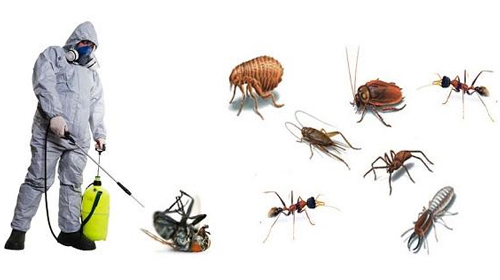The Impact of Global Warming on Insect Numbers

Global warming is essentially altering our environment, and its impact are becoming increasingly evident in multiple aspects of our existence. One significant consequence of these shifts in climate is the impact on insect numbers, which can pose challenges for homeowners and companies alike. As temperatures rise and climate conditions become more unpredictable, pests are adapting and changing their behaviors, leading to more frequent infestations in our houses and neighborhoods.
Understanding the effect of climate change on pest control is crucial for developing effective strategies to keep our homes pest-free throughout the seasons. From spring invaders to winter rodent problems, being cognizant of how climate variations affect pest behavior can empower us to take preventive measures. This article will explore common household pests, the importance of expert pest control, and realistic tips for keeping a pest-free environment in each season. Let's dive into the critical information you need to protect your house and family against these tenacious intruders.
Grasping Pest Activity and Climate Shifts
Shifts in climate are altering habitats throughout the planet, and pest species are no exception. Increasing temperatures and shifting weather trends are forming more favorable conditions for many frequent household pests. For example, milder winters permit insects like bedbugs and cockroaches to thrive and breed in areas where they once struggled to establish a presence. As the climate persists to warm, pests may shift into other regions, introducing with them a number of issues for pest control.
Furthermore, higher precipitation and humidity can amplify the risks posed by pests. Fungi and fungus thrive in moist conditions, often luring insects such as termites and woodboring insects that can cause significant destruction to homes and real estate. Homeowners must be alert in recognizing these environmental changes, as they actively add to the proliferation of pests. Comprehending this link between environment and pest habits is essential for effective pest management tactics.
In conclusion, the effect of climate change on pests can also create new issues in regulating their groups. Traditional pest control techniques may become less effective as pests adapt to new conditions. For instance, DIY pest control solutions may prove ineffective as pests develop resistance to certain treatments. It’s important for property owners to stay informed about the evolving pest situation and explore more holistic approaches, including routine professional pest control services, to ensure their homes pest-free year-round.

Successful Pest Control Methods
To successfully control pest populations in your home, it is crucial to utilize a mix of proactive measures, observation, and intervention strategies. Start by confirming that your home is thoroughly sealed. This includes inspecting for fissures in walls, voids around doors and windows, and closing up any paths where pests can enter. Maintaining a clean living environment is also essential; regularly cleaning your kitchen and dining areas reduces food sources that draw pests. Additionally, eliminating standing water can assist reduce many pest issues, especially mosquitoes.
Regular inspections carry a crucial role in early detection of pest problems. By watching areas where pests are prone to invade, such as basements, attics, and crawl spaces, you can recognize potential infestations before they become severe. Scheduling queen creek pest control can improve your home’s protection. These professionals have the expertise and tools needed to diagnose various pests and carry out successful control methods that are risk-free and eco-friendly.
When it comes to managing existing infestations, it is essential to choose the right approach based on the type of pest and the seriousness of the problem. For instance, some household pests like ants and roaches may be effectively managed to baiting systems, while others including bed bugs might require more thorough treatment plans. Always adhere to the guidelines for use and safety, especially when using chemical treatments. By integrating these strategies, you can create a effective pest management plan that ensures your home free from pests year-round.
Proactive Strategies for All-Year Pest Control
To keep a pest-free environment for the entire year, enforcing preventive measures is essential. Begin by sealing any cracks and crevices in your home’s exterior, as these gaps serve as entry points for different pests. Verify that windows and doors fit well and install weather stripping if needed. Regularly inspect your home for indications of pests and tackle any infestations promptly to prevent further problems.
Additionally, ensuring clean indoor and outdoor environments can substantially reduce the likelihood of pest invasions. Keep food stored in closed containers and immediately clean up spills and crumbs. Outdoor areas should be kept neat, with debris and standing water removed, as these draw pests like mosquitoes and rodents. Proper waste management also plays a critical role, so ensure trash bins are closed and collected regularly.
Lastly, contemplate scheduling regular pest inspections with a licensed pest control service. These inspections can spot potential issues before they escalate, offering peace of mind and making sure that your home remains safe year-round. With vigilance and proactive measures, you can efficiently manage pest populations and safeguard your living space.
